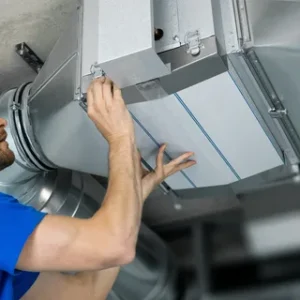 Modern architecture often gets typecast as sterile white boxes with sharp edges, minimalist spaces devoid of emotion. But beneath that smooth aesthetic lies a quiet rebellion: the rise of raw textures. These aren’t just design elements. They’re sensory invitations. They ask you to touch, to pause, to feel.
Modern architecture often gets typecast as sterile white boxes with sharp edges, minimalist spaces devoid of emotion. But beneath that smooth aesthetic lies a quiet rebellion: the rise of raw textures. These aren’t just design elements. They’re sensory invitations. They ask you to touch, to pause, to feel.
In an age of digital filters and hyper-glossed finishes, raw textures bring back imperfection, grain, and depth. They are the fingerprints of a space—honest, visceral, and unapologetically grounded. They make modern homes not just seen, but felt.
This isn’t a nostalgia act. Raw textures in modern interiors aren’t about rustic clichés or farmhouse fantasies. It’s about juxtaposition. Contrast. The shock of matte next to shine. The comfort of roughness against polish. And most of all, it’s about anchoring sleek design in material honesty.
Let’s explore the sensual language of texture and how it’s reshaping what modern homes feel like.
Concrete That Speaks in Silence
Once considered cold and utilitarian, concrete has undergone a dramatic shift in perception. In contemporary interiors, it’s no longer relegated to basements and sidewalks—it now dominates countertops, walls, fireplaces, even lighting fixtures.
But what makes concrete so compelling isn’t just its durability or neutrality. It’s the way it wears time. Its imperfections—pores, lines, color variations—are not flaws but features. A polished slab might catch light like water, while a raw pour might feel like stone carved from memory.
In open-plan homes, concrete creates cohesion without trying too hard. Its surface is honest—neither hiding nor flaunting. It lets other elements breathe. Surround it with warm wood, soft linen, or oxidized metals, and it acts as both canvas and contrast.
The beauty of concrete lies in its refusal to be perfect. And in modern interiors, that’s exactly the point.
Wood With a Memory
Wood is never just wood. It’s history made tangible. Whether it’s the grain of an old oak floor or the knot in a hand-carved table, each mark is a narrative. In sleek modern interiors, raw or reclaimed wood becomes a soulful interruption—a reminder that not everything needs to be new to feel fresh.
Raw wood adds warmth in places where modernism often turns cold. Think of a Scandinavian-inspired living room: white walls, matte black fixtures, minimalist art. Then add a thick, uneven slab of walnut as a dining table. Suddenly, the space breathes.
The appeal isn’t only visual—it’s tactile. The feel of unfinished wood under fingertips. The subtle smell of timber. The sound it makes underfoot.
By resisting high-gloss finishes and embracing raw or lightly oiled surfaces, modern homes let wood be what it was always meant to be: alive, evolving, imperfect. And that’s exactly what makes it beautiful.
Plaster Walls That Whisper Texture
In a time when drywall reigns supreme, plaster is making a quiet return—and not in the faux-finish way of the ’90s. We’re talking about real, hand-troweled plaster. Earthy. Matte. Touchable.
These walls don’t just sit in the background. They hum with depth. They reflect light differently depending on the hour. They catch shadows and throw them back in soft, uneven gradients. There’s a softness to plaster that drywall could never replicate.
What makes plaster powerful in modern homes is contrast. Pair it with steel-framed windows. Let it embrace a sculptural pendant light. Surround it with concrete or glass. Plaster becomes the quiet drama—the emotional resonance in an otherwise controlled space.
It invites slowness. You want to lean in. Run your hand along its surface. Trace its micro-topography. And suddenly, the room has a pulse.
Iron That Grounds the Room
There’s something primitive and permanent about iron. It doesn’t ask for attention—but it takes it anyway. Whether raw, blackened, or aged into a mottled patina, iron carries weight—not just in form but in presence.
This is where pieces like the Paladin Clarendon Column Radiator find their strength. Not only do they serve a functional purpose, but their tactile, cast-iron form becomes a visual anchor in a space. The radiator doesn’t fade into the wall; it stands proud, its ridges and curves catching light and shadow like sculpture.
In an ultra-modern home full of smooth surfaces and hidden features, introducing raw iron is a reclamation of material honesty. It says, “This is not trying to disappear.” It grounds the space—not just literally, but emotionally.
Iron, especially in such utilitarian forms, becomes art through intention. And when it’s paired with soft textiles, raw wood, or plaster walls, it creates tension that feels deeply human.
Leather That Ages With You
There’s leather that looks perfect on day one—and then there’s leather that gets better with every scratch, every crease, every sun-faded patch. That’s the kind of leather raw-modern homes are choosing. Full-grain, vegetable-tanned, unsanded. Leather that lives.
This type of leather is tactile memory. It smells like craftsmanship. It darkens with time. It absorbs sunlight and oil from hands. It softens not because it’s weak, but because it’s generous.
A simple sling chair, a vintage bench, or a minimal sofa can all become emotional touchpoints when wrapped in raw leather. In contrast to the sterile or synthetic materials that dominate tech-driven spaces, leather adds warmth—and not just in temperature, but in tone.
Raw leather doesn’t scream for perfection. It’s not afraid to show wear. In fact, it invites it. And that vulnerability is what makes it magnetic.
Stone That Refuses to Apologize
Polished marble has its place, but raw stone—rough, veined, jagged—is where the magic really happens. In kitchens, it becomes the bold edge of an island. In bathrooms, it’s a basin carved from a single boulder. In living rooms, it’s a fireplace mantel that looks like it’s been there forever.
Raw stone doesn’t follow trends. It is the trend. Because it reminds us that design isn’t always about shine. Sometimes, it’s about substance.
The beauty of stone is in its defiance. It doesn’t conform. No two slabs are alike. No edge is perfectly smooth. And yet, it works—in a dining table, a stair tread, a bookshelf. Especially when surrounded by modern forms and soft lighting, stone becomes a kind of primal punctuation in an otherwise urbane sentence.
It’s a reminder of nature’s permanence in the midst of man-made change.
Glass That’s Not Trying to Be Invisible
We’re used to glass being spotless, polished, see-through. But modern homes are now exploring glass in its more rugged forms—frosted, bubbled, reeded, recycled. Glass with character.
Instead of disappearing, this kind of glass refracts. It distorts. It softens harsh edges and adds texture to transparency. A room divider made of ribbed glass adds privacy and style. A pendant light made from imperfect blown glass casts organic shadows. Even windowpanes with subtle waviness catch the sunlight differently.
This is glass with a point of view. It’s not neutral—it’s expressive. And when used intentionally, it plays with perception. It allows you to see, but not too clearly. It invites curiosity. It adds mystery to modern clarity.
Glass doesn’t need to be smooth to be beautiful. Sometimes, what’s missing—the bubbles, the bends, the blur—is what makes it unforgettable.
Fabric That Isn’t Afraid to Wrinkle
Forget the ironed linen and starched cotton of showroom perfection. In the raw-modern home, fabric is allowed to be free. Drapes that puddle on the floor. Slipcovers that shift slightly. Bed linen that looks slept-in, not staged.
These textures soften the architecture. They say, “People live here.” Washed linen, wool blends, cotton gauze—fabrics with visible fibers and tactile openness bring the human touch back to clean design.
This softness is not sloppy—it’s soulful. It creates emotional acoustics. A velvet sofa next to a raw metal radiator. A crumpled throw against a concrete bench. This layering creates a mood that can’t be captured in catalog spreads.
Fabric, when left to move and breathe, adds an organic rhythm to the sharp lines of modernity. It teaches restraint without removing comfort.
Conclusion: Texture as a Language of Emotion
Raw textures aren’t about nostalgia or rebellion. They’re about authenticity. In the sleekness of modern design, they are the reminder that real life is textured. That surfaces should invite hands, not repel them. That rooms should evolve, not pose.
Incorporating texture into modern homes is not about filling space—it’s about deepening it. It’s about creating interiors that aren’t just photographed, but felt. Where a Paladin Clarendon Column Radiator anchors the room with history and substance. Where concrete hums softly under bare feet. Where fabric wrinkles without apology. Where wood breathes. And where stone stays silent, but never unnoticed.
Raw texture is not a style. It’s a philosophy. A way of saying: “We are not afraid to show the grain of our lives.”
In embracing imperfection, we create spaces that don’t just impress—they endure.





